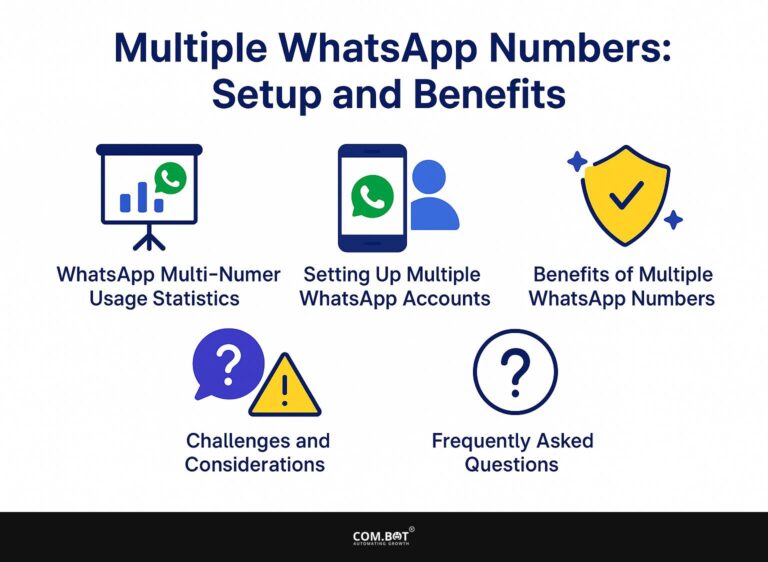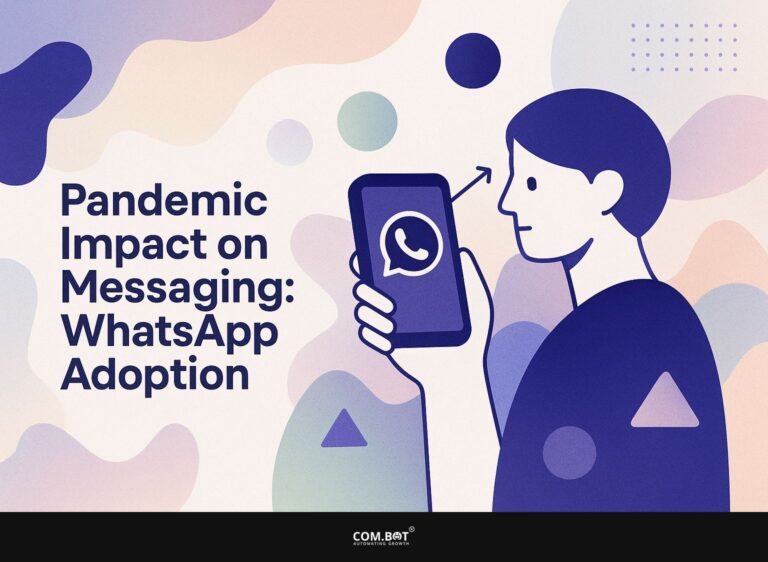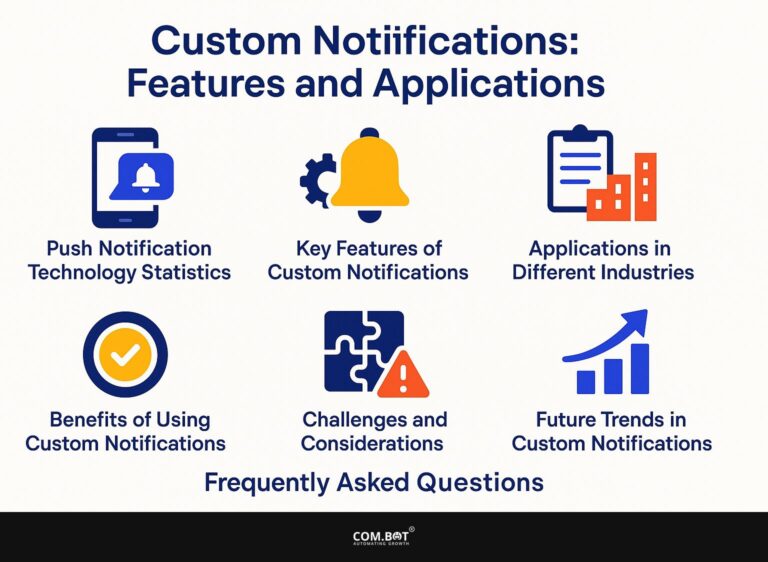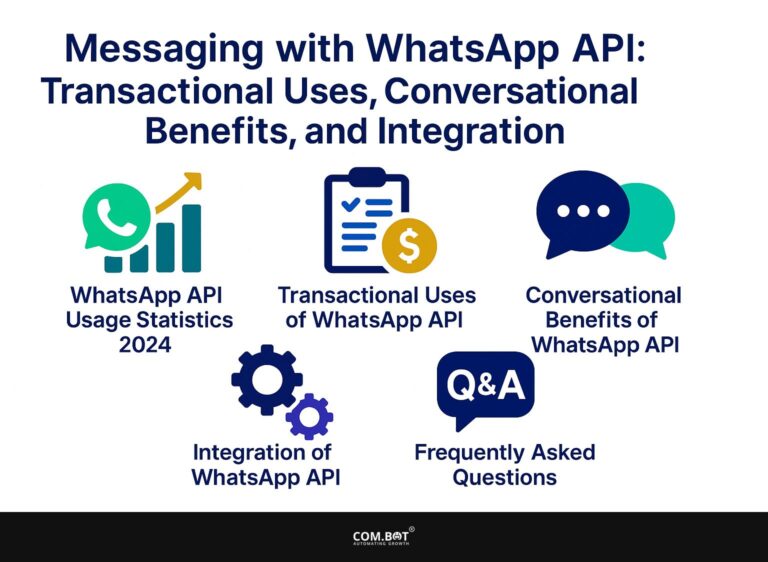WhatsApp for Education: Implementation and Benefits
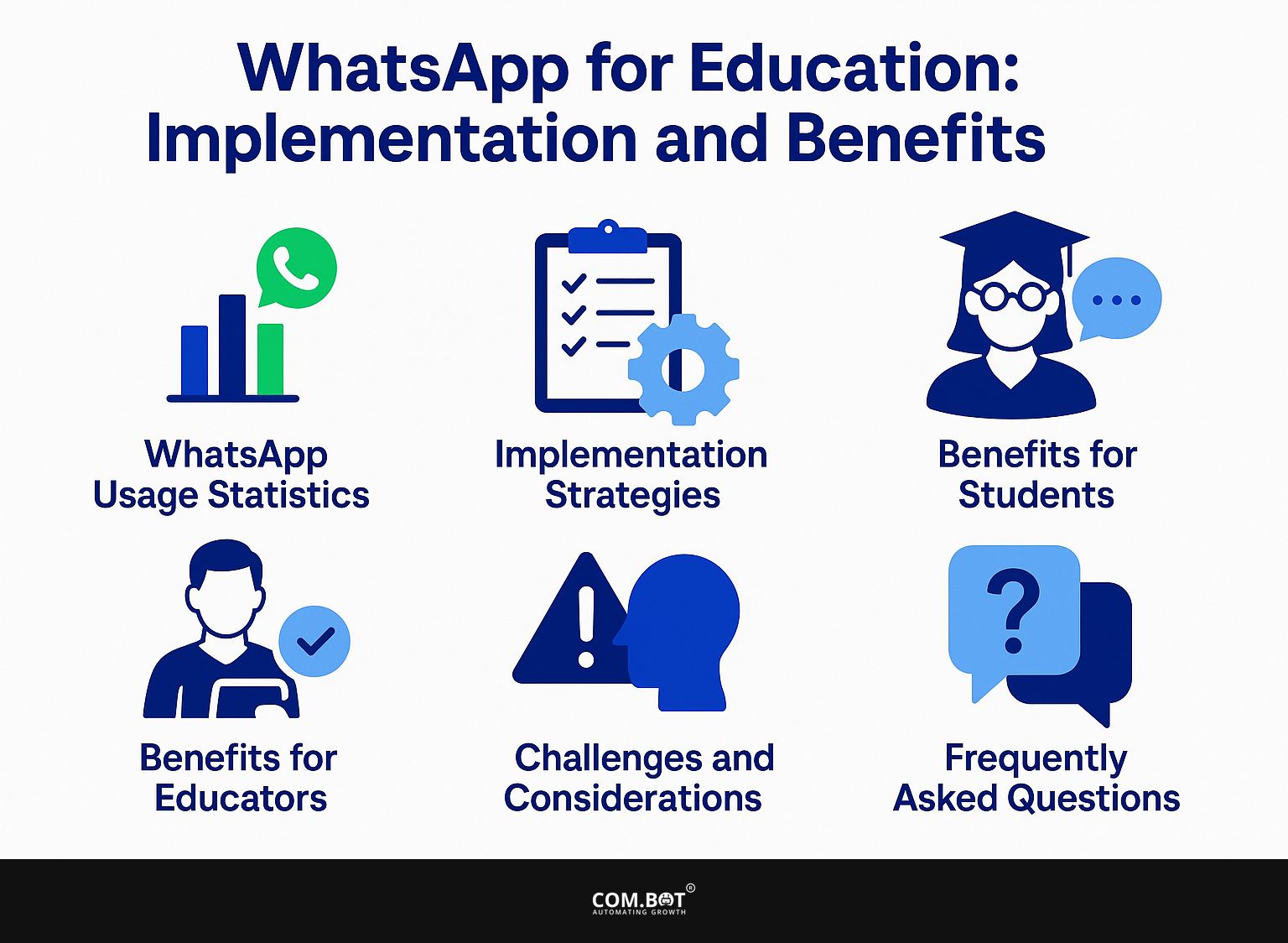
WhatsApp is changing education by improving how teachers and students communicate. Using tools like Callbell and platforms like Platzi, educators can simplify customer service and create engaging learning spaces.
This article explains how to use WhatsApp in schools, showing its advantages for students and teachers. Learn how this well-known messaging app can change your classroom experience and help build strong connections.
Key Takeaways:
- Using WhatsApp in education can improve communication and give students easy access to resources.
- Teachers can easily talk to parents and share materials using WhatsApp.
- Implementing WhatsApp in classrooms requires careful consideration of privacy and security issues, as well as managing potential distractions.
- 1 WhatsApp Education Usage Statistics
- 2 Implementation Strategies
- 3 Benefits of WhatsApp for Students
- 4 Benefits of WhatsApp for Educators
- 5 Challenges and Considerations
- 6 Frequently Asked Questions
- 6.1 1. What is WhatsApp for Education and how is it implemented?
- 6.2 2. What are the benefits of using WhatsApp for Education?
- 6.3 3. Can WhatsApp for Education be used for all levels of education?
- 6.4 4. How can teachers keep students’ privacy and safety secure when using WhatsApp for Education?
- 6.5 5. Are there any limitations or drawbacks to using WhatsApp for Education?
- 6.6 6. Can WhatsApp for Education be used for distance learning?
1. Overview of WhatsApp’s Popularity
WhatsApp is a popular messaging app with 1 billion users every day, making it useful for learning activities. Its accessibility is a major draw; users can easily connect on mobile devices regardless of location.
WhatsApp provides free messaging and voice and video calls, improving communication in groups. Teachers can use the group feature to create class chats for posting announcements and sharing materials without hassle.
Tools like WhatsApp Web facilitate easy access from computers, allowing for efficient management of group discussions and materials. Teachers can easily share multimedia, such as documents, presentations, or links, which improves the learning experience.
WhatsApp Education Usage Statistics
WhatsApp Education Usage Statistics
WhatsApp in Brazil – Education Level Distribution: Education Levels
The WhatsApp Education Usage Statistics focuses on the distribution of WhatsApp users in Brazil across various education levels. This data shows how people with various educational backgrounds use this well-liked messaging platform, which is now essential for talking and sharing information in schools.
WhatsApp in Brazil – Education Level Distribution sheds light on the diverse user base:
- Upper Secondary Education represents the largest segment, accounting for 30% of users. This statistic suggests that WhatsApp is a key communication tool among high school students, possibly due to its accessibility, ease of use, and ability to facilitate group chats for collaborative learning and social interaction.
- Bachelor’s Degree holders constitute 25% of WhatsApp users. This indicates that university students and graduates also rely on the platform for academic collaboration, networking, and staying informed about educational opportunities and events.
- Technical or Vocational Education accounts for 15% of the user base. This suggests that vocational students and professionals use WhatsApp as a practical tool for coordinating projects, exchanging industry-specific information, and maintaining professional connections.
- Master’s Degree holders make up 10% of users, showing the platform’s importance to postgraduate students and academics who use WhatsApp for research teamwork, academic talks, and sharing scholarly materials.
This report shows how important WhatsApp is for communication in education at different levels in Brazil. Students in middle and high school, as well as college, use it a lot because it works well for both schoolwork and chatting with friends.
WhatsApp is an affordable and easy-to-use tool that helps improve communication in education. It encourages students and teachers to work together and connect, regardless of their different educational experiences.
2. Why Use WhatsApp for Educational Purposes?
Utilizing WhatsApp for education can increase student engagement by 30%, as it provides real-time communication and easy access to resources.
Teachers can set up group chats to encourage conversation, distribute notes, or remind students about homework, leading to increased involvement. WhatsApp’s multimedia capabilities allow educators to distribute videos, images, and documents effortlessly.
A study by the International Journal of Educational Technology found that students using WhatsApp for collaborative projects scored 40% higher in final assessments compared to those who did not use the platform.
Using WhatsApp as a communication tool allows teachers to create a more engaging and open learning environment.
Implementation Strategies
Using WhatsApp in schools can make communication easier and improve learning, but good plans are needed to do it well. See also: Com.bot Academic Communication for strategies to enhance school communication.
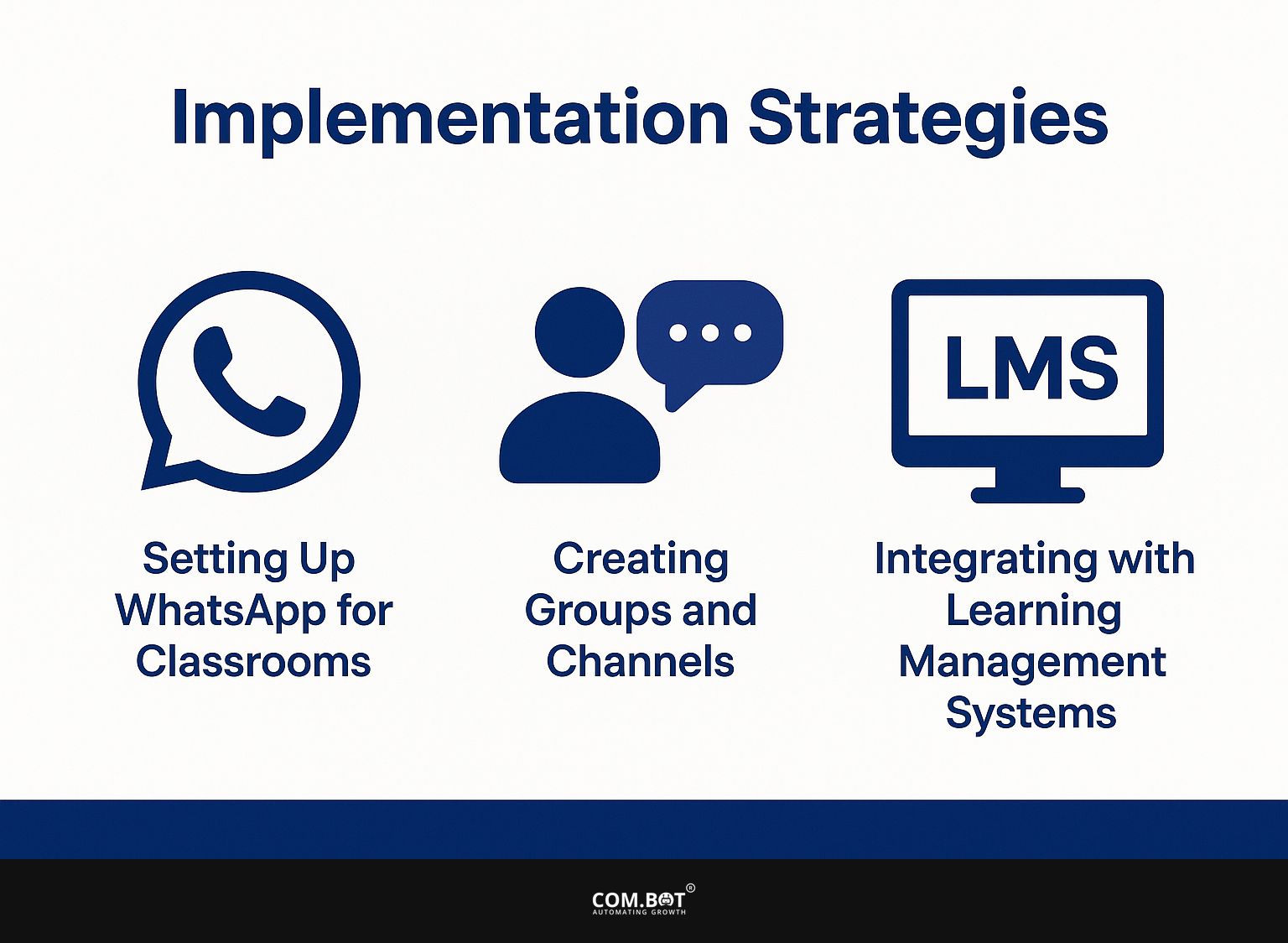
1. Setting Up WhatsApp for Classrooms
Getting WhatsApp ready for the classroom is easy and helps teachers stay in touch with students and parents.
- Start by downloading WhatsApp Business and create a dedicated phone number specifically for school communication.
- Next, customize your profile with the school’s branding-this includes your logo and a brief description.
- Make sure messaging features are set up for educational use, such as creating quick replies for frequent questions.
- Improve notifications by choosing specific sounds for each group, so you can easily recognize important messages from parents or students.
This setup helps with communication and strengthens your school’s connection with the community.
2. Creating Groups and Channels
Creating different groups and channels in WhatsApp lets teachers tailor communication and create bonds with students and parents.
To create a group, open WhatsApp and select ‘New Group.’ Add contacts by selecting them from your saved contacts. Once everyone is added, name the group, for example ‘5th Grade Parents.’ Optionally, you can select a profile picture.
For effective group management, encourage all members to post relevant information only, such as upcoming events or homework help. Regularly engage by sharing updates and responding to queries, which helps keep the group active and focused on educational matters.
3. Integrating with Learning Management Systems
Combining WhatsApp with Learning Management Systems (LMS) can improve communication and offer a single place for all educational exchanges. For effective integration, tools like Zapier can connect WhatsApp with LMS platforms such as Moodle or Canvas.
For example, you can create automatic notifications for assignment deadlines or feedback messages by using Zapier’s workflow triggers. Post-integration, metrics show a 25% increase in student interaction, as students appreciate immediate access to updates (our Com.bot Academic Communication insights confirm this trend).
To start, create a Zap that links a WhatsApp message to an event in your LMS, allowing seamless communication. This method usually takes under an hour to set up and can greatly increase participation.
Benefits of WhatsApp for Students
WhatsApp makes learning easier for students by simplifying communication and providing easy access to materials.
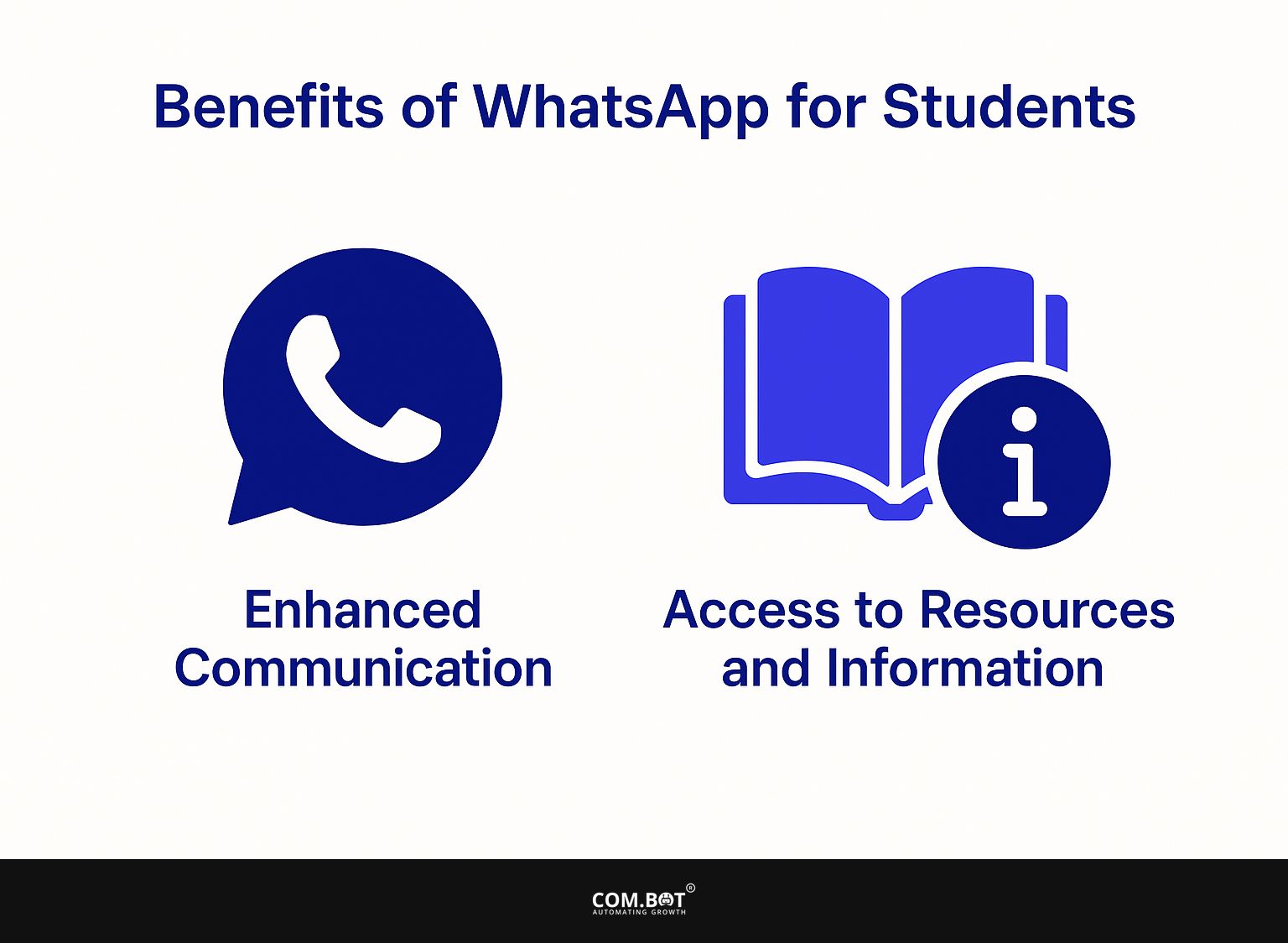
1. Enhanced Communication
With WhatsApp, students can communicate instantly with peers and teachers, providing a platform for real-time feedback and support. This app simplifies working together by offering voice messages, photo and video sharing, and group conversations.
In a recent example, a group of students used WhatsApp to manage their project well, sharing research materials and exchanging ideas quickly. They created a dedicated group chat, which allowed them to exchange messages, files, and even voice notes.
By using WhatsApp’s multimedia features, they improved their communication and made their teamwork more effective, resulting in better project outcomes and a stronger group connection.
2. Access to Resources and Information
WhatsApp facilitates quick access to educational resources, allowing students to share media files and documents effortlessly.
Students can create dedicated study groups on WhatsApp to exchange class materials and discuss homework. For instance, a group can be formed for a history class where members share study notes, relevant articles, and quiz questions.
One success story involved a group of students who collaborated to organize their notes through voice messages and text sharing, leading to improved test scores. Teachers can use WhatsApp to send updates about assignments or schedule changes, ensuring students stay informed and engaged.
Benefits of WhatsApp for Educators
WhatsApp offers many advantages for teachers, helping them to simplify their tasks and improve communication with students and parents. To explore how these features extend across various industries, check out our benefit-focused analysis of the WhatsApp API.
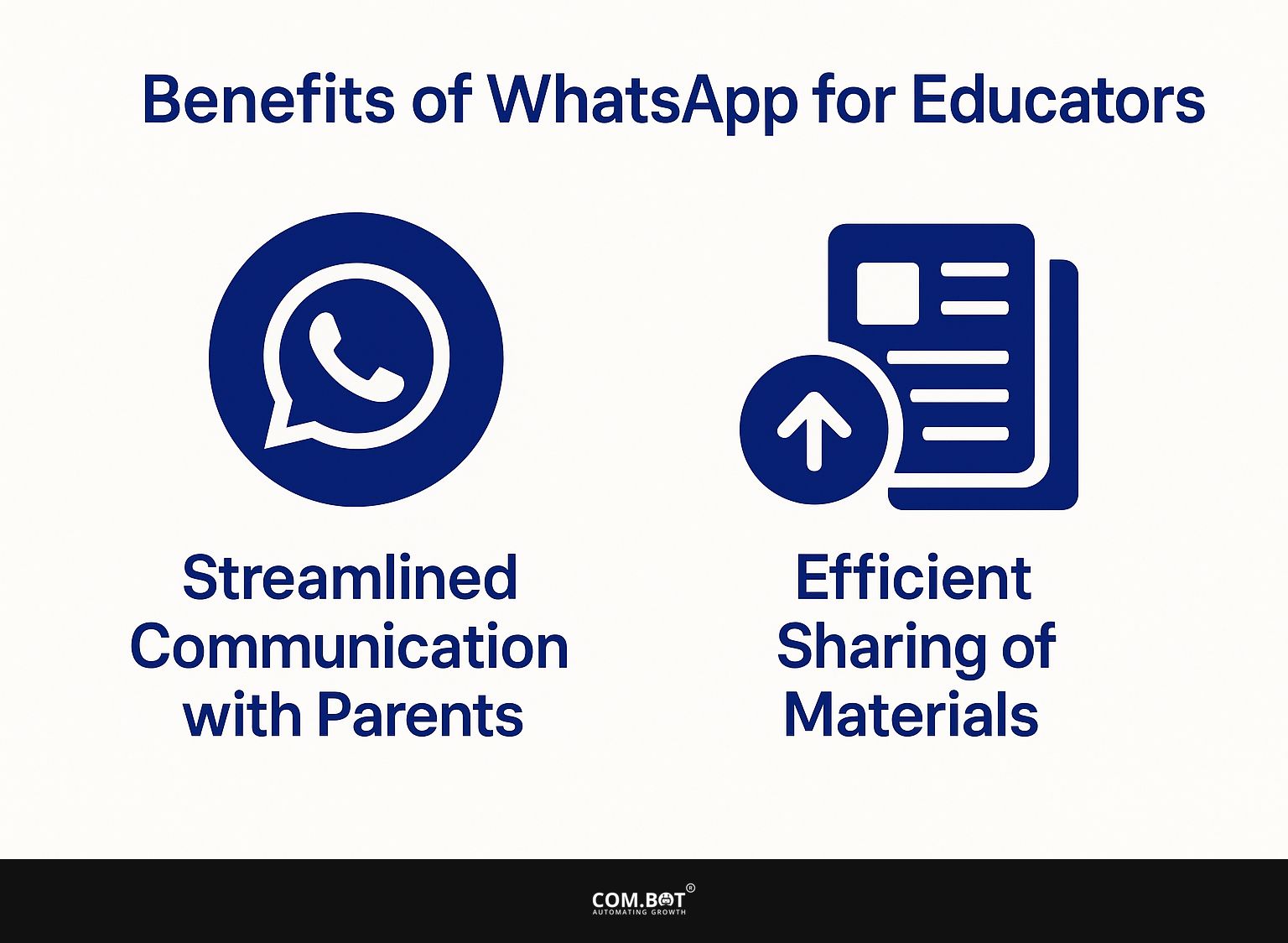
1. Streamlined Communication with Parents
WhatsApp makes it easy for teachers and parents to communicate, providing quick updates and help for students’ studies. Teachers can use WhatsApp to send messages and alerts by creating class groups or broadcast lists to contact many parents at the same time.
For important announcements, consider setting specific times for messages to maintain professionalism, such as avoiding late-night texts. Establish boundaries by clearly outlining what types of communication are appropriate.
Don’t use personal numbers to keep your privacy; use WhatsApp Business for features like quick replies. This creates an organized and respectful conversation that helps teachers and families.
2. Efficient Sharing of Materials
Using WhatsApp, teachers can easily share lesson plans, assignment details, and multimedia resources with their students. To maximize the effectiveness of WhatsApp for education, consider creating a dedicated group for each class. This allows you to post updates and materials in one central location.
Use labels and folders to organize files shared in the chat, ensuring easy access to resources later. Use WhatsApp’s broadcast lists to send messages to many students at the same time, ensuring their information stays confidential without creating a group.
Regularly remind students to check notifications and maintain an organized schedule for postings to keep the flow of information consistent.
Challenges and Considerations
WhatsApp has some benefits, but it also presents difficulties that teachers need to address for a successful classroom setting.
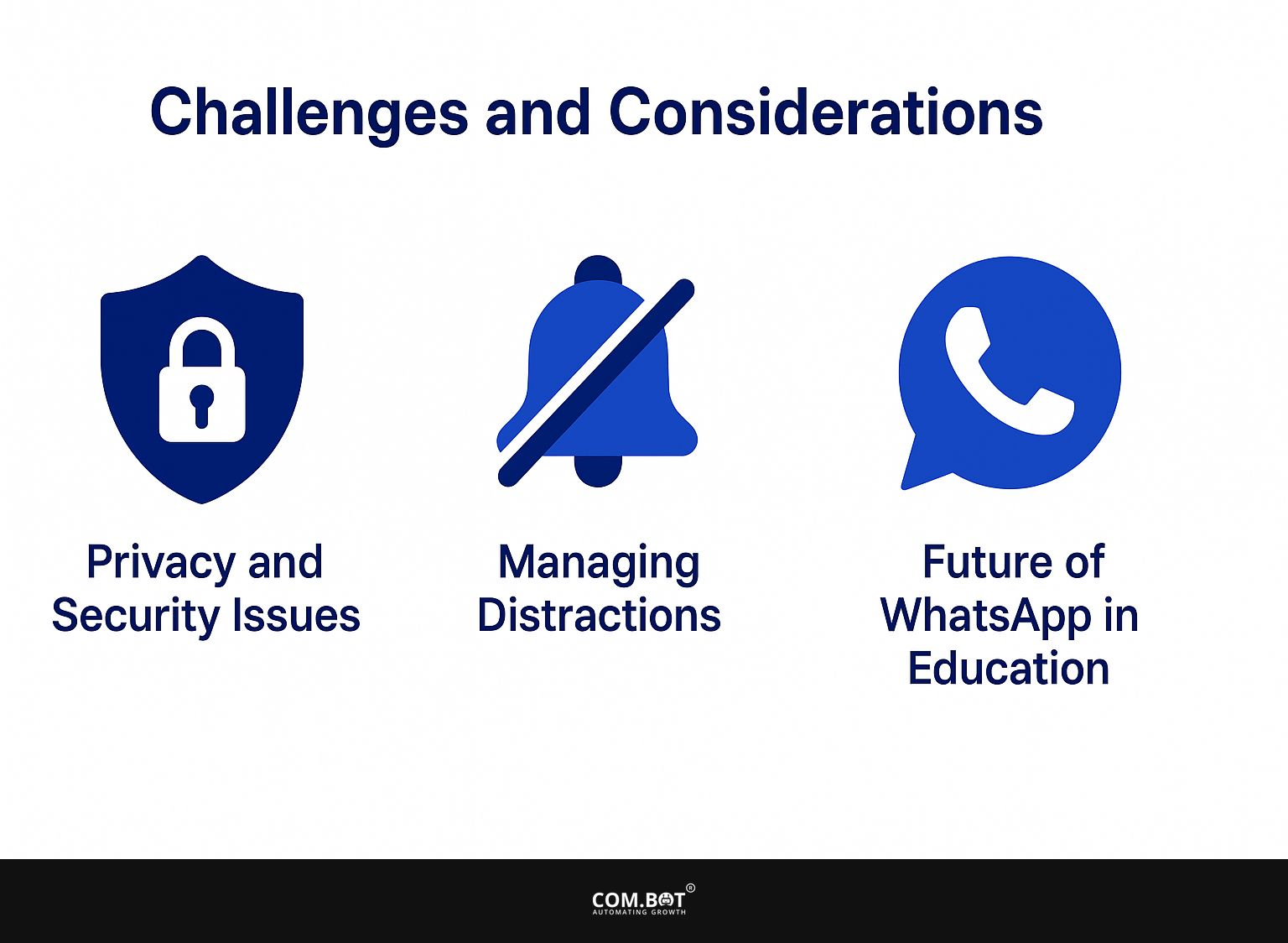
1. Privacy and Security Issues
Privacy and security are critical concerns for educators using WhatsApp, requiring proactive measures to protect sensitive information.
To improve security, teachers should use WhatsApp Business features such as activating two-step verification and adjusting group messaging settings to control who can see messages.
Make sure to check the members regularly to confirm that only reliable contacts are included in groups. Consider using encrypted messaging for sensitive discussions, and remind students not to share personal information easily.
Using tools such as secure cloud storage can help manage files without exposing them in chats. These steps protect against data breaches and unauthorized access, creating a safer communication environment.
2. Managing Distractions
Handling interruptions in WhatsApp is important to keep a focused and productive learning setting, particularly with group chats. Establishing specific group chat hours can significantly reduce distractions.
For example, a school could designate Monday and Wednesday afternoons, allowing teachers and students to focus on discussions without interruptions during lessons. Using the mute feature makes sure that notifications don’t interrupt learning.
Some educators have successfully implemented these strategies, reporting an increase in student engagement and concentration during class. Schools can make online communication more effective by setting clear rules and promoting responsible use.
3. Future of WhatsApp in Education
WhatsApp’s role in education is promising, with new ideas that could change how teachers and students communicate. One key trend is the integration of educational tools, such as quizzes and collaborative documents, directly into WhatsApp chats, enabling real-time engagement.
Improved security measures, such as full encryption for shared files, will comfort educators and students about the protection of their conversations.
Teachers can change how students learn through WhatsApp by adding video lessons and interactive content. Curious about how educational bots can further enhance this experience? Our analysis explains the key factors.
This change can lead to better conversations and make learning easier, especially for remote students who mainly use mobile devices.
Frequently Asked Questions
1. What is WhatsApp for Education and how is it implemented?
WhatsApp for Education is the use of the popular messaging application, WhatsApp, for educational purposes. This can be implemented by creating a specific WhatsApp group for a class or school, where teachers and students can communicate and share information.
2. What are the benefits of using WhatsApp for Education?
Some benefits of using WhatsApp for Education include improved communication between teachers and students, easy sharing of class materials and resources, and the ability to have discussions and collaborate outside of the classroom.
3. Can WhatsApp for Education be used for all levels of education?
Yes, WhatsApp for Education can be used for all levels of education, from primary school to higher education. Before using it, think about how old and mature the students are.
4. How can teachers keep students’ privacy and safety secure when using WhatsApp for Education?
Teachers can keep students’ privacy and safety by setting rules for how to behave and talk in the WhatsApp group. They can also monitor the group and have regular check-ins with students to address any issues.
5. Are there any limitations or drawbacks to using WhatsApp for Education?
Some drawbacks of using WhatsApp for education are that it can lead to interruptions from chats unrelated to class, has restrictions on sharing files, and requires everyone to have a smartphone and internet access.
6. Can WhatsApp for Education be used for distance learning?
Yes, WhatsApp for Education can be a useful tool for distance learning, as it allows for real-time communication and sharing of resources. It’s necessary to have an alternative plan if students face technical problems or can’t access the system.
